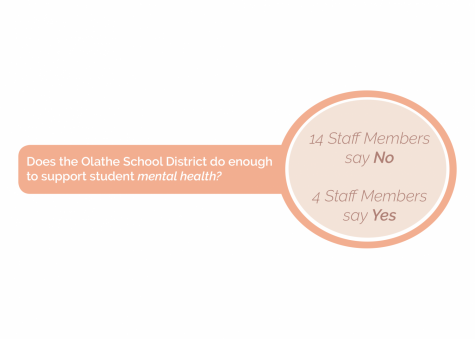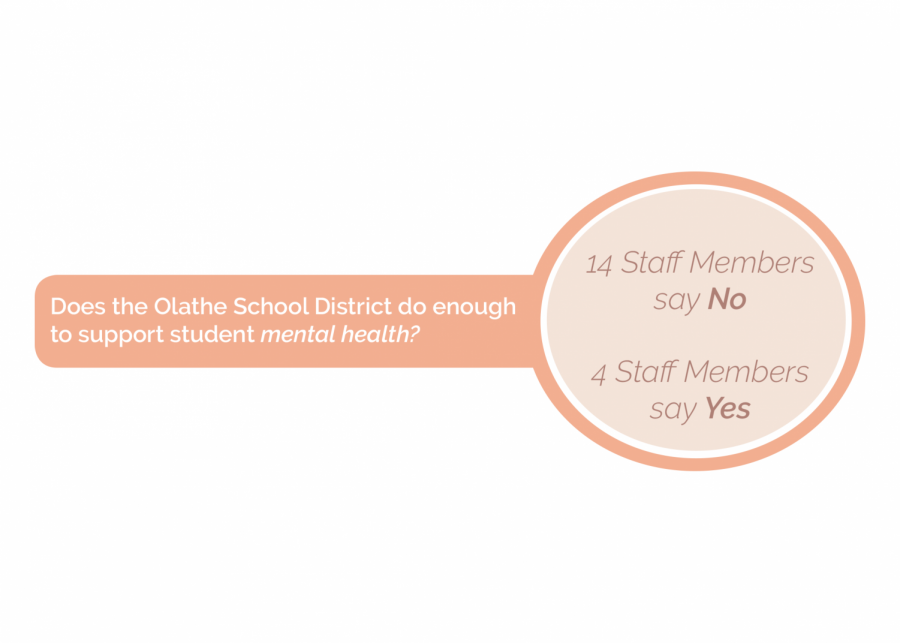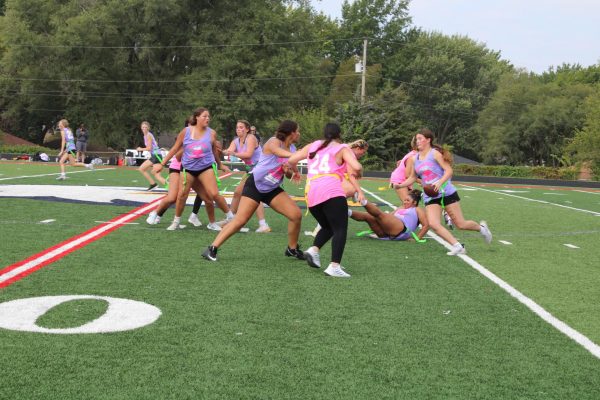Staff Editorial: One Day Isn’t Enough
Students at Olathe North argue that the full scope of suicide prevention can not be covered in a week, let alone a single day.
October 8, 2019
When it comes to mental health, there never seems to be a way to help every person who is struggling. While the district implements the Signs of Suicide (SOS) program for the second year in a row, it still feels like the issues of mental health aren’t discussed enough to many students.
Students believe that SOS themes, and the support of general student mental health isn’t addressed for long enough. One day out of the whole year, one week out of the whole year, it isn’t enough to address the real issues that students have.
The district can be applauded for stepping up in the first place to try new ways to bring the mental health conversation into the classroom. It can be applauded for putting in the effort to build lesson plans and stick their toe into the water of mental health. And they can be applauded for recognizing the stigma around mental health and illness.
However, what they have done so far can only be seen as a start to the conversation. As a district, we talked about the signs, the statistics, and about what to do in order to help someone we are worried about. But the districts approach to discussing mental health still feels impersonal to some students, and there are more resources students could benefit from like guest speakers. The talk of only these statistics and signs becomes dull, and students stop wanting to talk about mental health. Drilling the signs does not help the students discuss the issue, and it doesn’t give any new level of understanding.
According to the American Foundation for Suicide Prevention, suicide was the second leading cause of death among individuals between the ages of 10 and 34 in 2018.
Conversation falls around opinion and perception. Facts are what ground the conversation, and are therefore necessities. But these facts cannot be the only things that the district focuses on in the future. The discussions of mental health and advice on how to cope with these issues will only help the students, and the district should give more of these opportunities to its students.
Students are passionate about preserving mental health and staying healthy even with high stress surrounding us. As many of us are in advanced classes, we understand that the school district doesn’t often recognize the levels of stress that come from the schools themselves. Yet we all wish these stressors were lessened to help support students, especially those students with 5-6 AP classes crammed into an 8-hour school day.
Overall, there is more that the district could do. There is no immediate solution to supporting every student’s mental health. But there is one thing we could do.
Students agree that it would be a step in the right direction in providing further resources to coping mechanisms, so bring back the therapy dogs that are brought in once a year give the students that mental break. It is the happiest The Chronicle staff has seen the student body during the year, and the staff itself had a great day when the school brought the dogs in to visit.
Providing and advertising the resources that the students have access to is key to helping the student body open up about their struggles. Along with such, it will help to de-stigmatize the seeking of help with their mental health struggles. Removing the stigma around mental health and suicide struggles will be the first big step.




